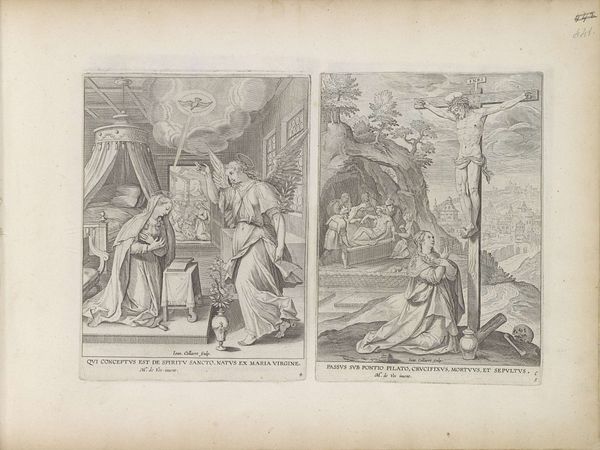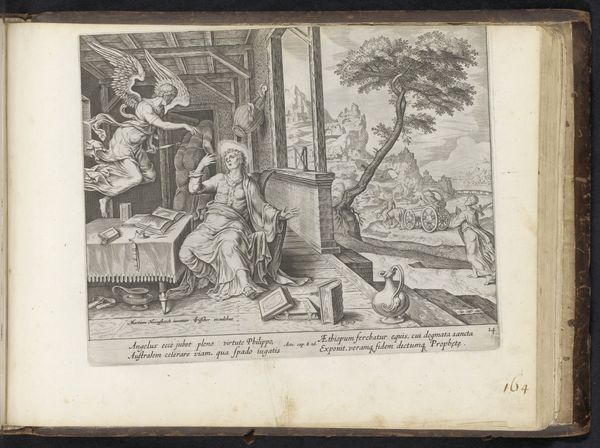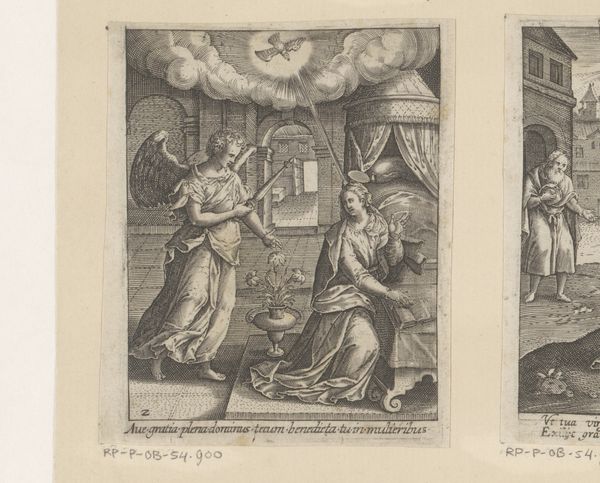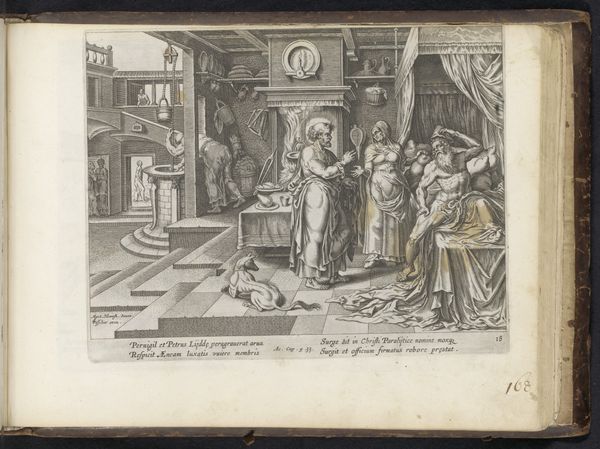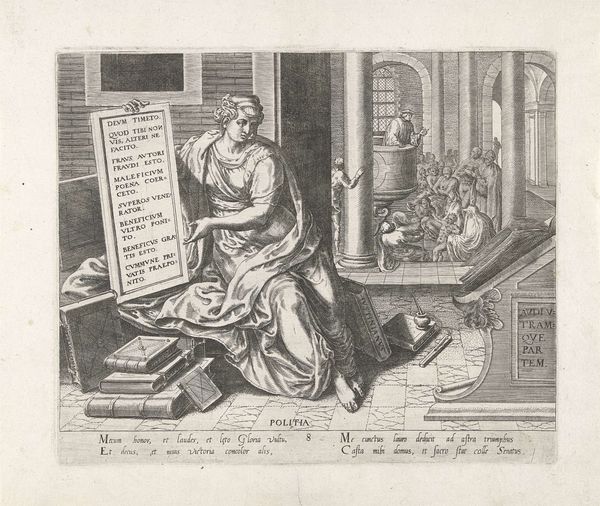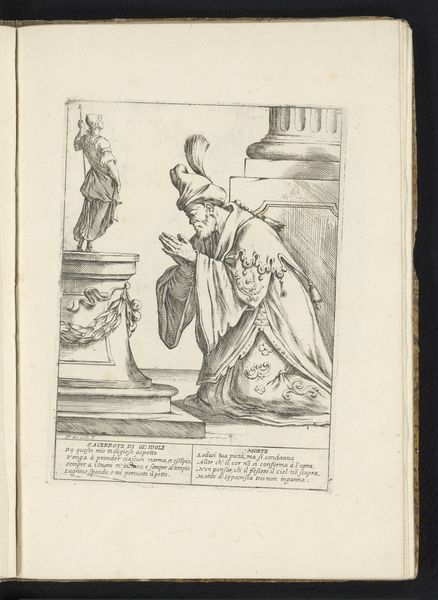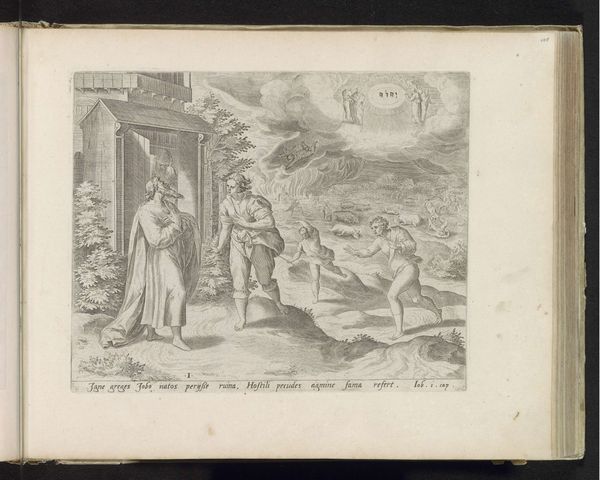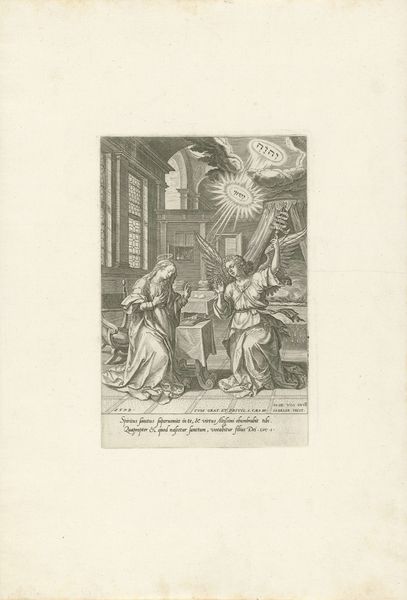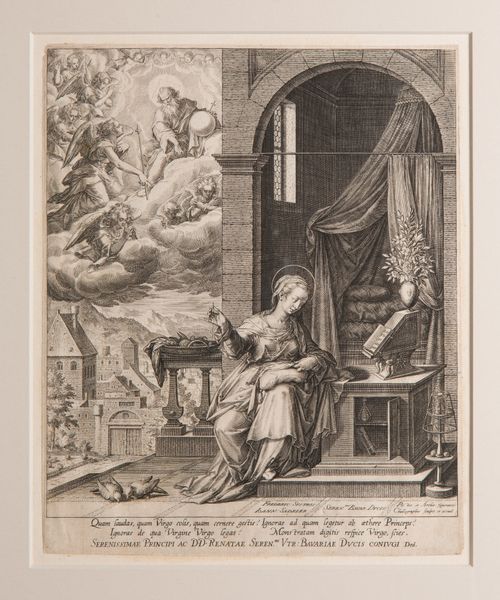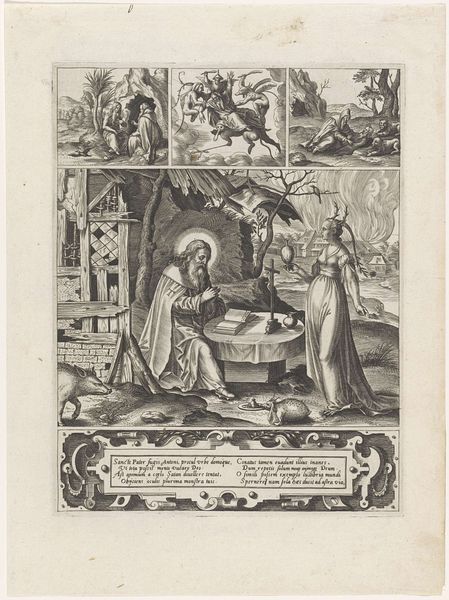
drawing, print, paper, ink, engraving
#
drawing
#
narrative-art
# print
#
figuration
#
paper
#
ink
#
coloured pencil
#
line
#
history-painting
#
northern-renaissance
#
engraving
Dimensions: height 187 mm, width 139 mm
Copyright: Rijks Museum: Open Domain
Editor: This is "Annunciation," a print made with ink on paper by Jan (II) Collaert, sometime between 1570 and 1646. It has a somber yet refined quality to it, a result of the precise line work. What symbols jump out at you in this depiction? Curator: Note how the Holy Spirit, in the form of a dove, descends directly upon Mary, represented within a halo of light. The dove symbolizes purity, peace, and a direct conduit to the divine. In art, its symbolic weight dates back millennia, signifying not only the presence of God, but also concepts of grace and inspiration. Editor: The inclusion of the dove seems quite standard for such art. Curator: True, it’s a visual trope, but consider the setting itself. The bed and domestic space contrasts with this miraculous occurrence, bringing it into the realm of the everyday. It domesticates the divine, reflecting the reformers’ focus on individual piety within everyday life. It prompts viewers to contemplate the divine spark present within their own ordinary lives. Does that shift your perspective a bit? Editor: I hadn’t thought about it that way; so it brings God to everyday life? I find it curious how artists incorporate familiar and traditional symbolic imagery in these unique works. Curator: And that ongoing synthesis across history enriches meaning; an artist can evoke historical meaning through symbols, while shaping novel associations with inherited forms. We carry collective memories in visual shorthand, yes? It also suggests that artists responded to current and changing views of faith and meaning making in contemporary culture. Editor: Thanks. Considering the blend of traditional and innovative imagery will definitely deepen how I engage with works of art moving forward.
Comments
No comments
Be the first to comment and join the conversation on the ultimate creative platform.
